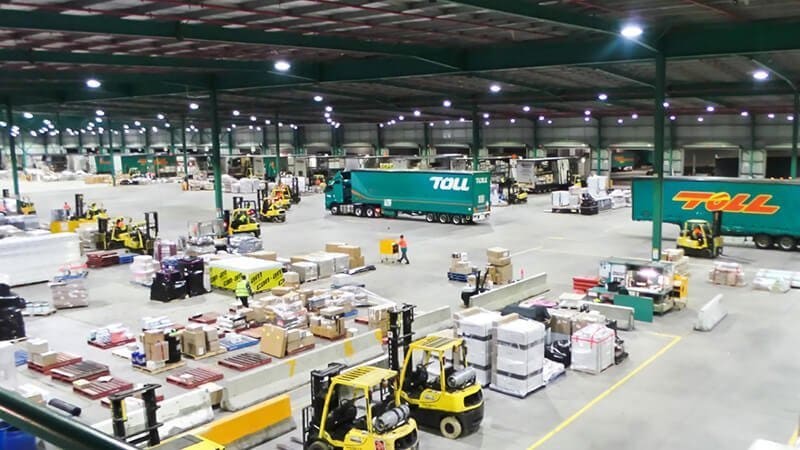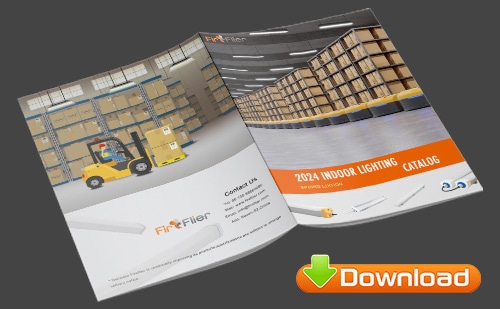When it comes to setting up a warehouse, there are a lot of things to consider. One important factor that often gets overlooked is the coverage area of your warehouse lighting. Proper lighting is critical for a safe and efficient warehouse, and knowing how many lights you need and where to place them is essential. In this blog, we will discuss everything you need to know about the coverage area of a warehouse light and how many lights you need in your warehouse.
What is coverage area of warehouse lighting?
The coverage area of warehouse lighting refers to the area that the light fixture illuminates. It is important to know the coverage area of your warehouse lights because it helps you determine how many lights you need and where to place them. A light fixture with a larger coverage area will require fewer fixtures overall, but it may not provide enough illumination in specific areas. On the other hand, a smaller coverage area may require more fixtures to properly light your warehouse.
Factors that affect the coverage area of a warehouse lighting
The coverage area of a warehouse light is affected by several factors, including the height of the ceiling, the type of lighting used, the size of the warehouse, and the layout of the space. Here are some of the main factors that can impact the coverage area of your warehouse lights:
- Ceiling Height: The height of your warehouse ceiling plays a significant role in determining the coverage area of your lights. The higher the ceiling, the larger the coverage area will be for each fixture. Conversely, if the ceiling is low, you may need more fixtures to cover the same area.
- Type of Lighting Used: There are several types of lighting used in warehouses, including LED, fluorescent, and HID lights. Each type of lighting has different coverage areas, brightness levels, and energy efficiency. LED lights are the most energy-efficient and offer the largest coverage area, making them the most popular choice for warehouses.
- Size of the Warehouse: The size of your warehouse will also affect the coverage area of your lights. A larger warehouse will require more lights to ensure adequate coverage, while a smaller warehouse may only need a few well-placed lights.
- Layout of the Space: The layout of your warehouse is another important factor to consider. If your warehouse has a lot of narrow aisles or tight spaces, you may need more lights to ensure that each area is properly illuminated.
How many lights do you need in your warehouse?
Determining how many lights you need in your warehouse requires a bit of math. The first step is to calculate the square footage of your warehouse. To do this, measure the length and width of the space and multiply the two numbers together. For example, if your warehouse is 100 feet long and 50 feet wide, the total square footage would be 5,000 square feet.
Once you know the square footage of your warehouse, you can use the following formula to determine how many lights you need:
Total Lumens Required = (Square Footage x Foot Candles) / Lumens per Fixture
Foot candles are a measure of light intensity, and they represent the amount of light that falls on a square foot of surface area. In a warehouse, a minimum of 30 foot candles is recommended for general lighting, while higher foot candles may be needed for specific areas such as loading docks or inspection areas.
The number of lumens per fixture will depend on the type of lighting you choose. LED lights typically provide the highest lumens per watt, making them the most energy-efficient choice. For example, if you choose an LED fixture that provides 20,000 lumens and you need 50,000 lumens to properly illuminate your warehouse, you would need at least three fixtures.
Where to place warehouse lights?
The placement of your warehouse lights is just as important as the number of lights you need. Proper placement ensures that your entire warehouse is adequately illuminated and that there are no areas of shadow or darkness. Here are some tips for where to place your warehouse lights:
- General Lighting: For general lighting, you should aim to have a uniform distribution of light throughout your warehouse. This means placing lights evenly throughout the space, with a spacing of around 20 to 30 feet between fixtures. If your warehouse has high ceilings, you may need to install fixtures at a greater height to ensure adequate coverage.
- Task Lighting: Task lighting is used to illuminate specific areas where workers need additional light to perform their jobs safely and effectively. This may include loading docks, inspection areas, or workstations. Task lighting should be bright enough to provide adequate illumination for the task at hand, but not so bright that it creates glare or shadows. It is typically installed at a lower height than general lighting fixtures.
- Aisle Lighting: If your warehouse has narrow aisles, you may need to install lights specifically for aisle lighting. These lights are installed along the sides of the aisles and provide additional illumination for workers as they move through the space. Aisle lighting should be placed at a height that does not interfere with the movement of workers or equipment.
- Emergency Lighting: In addition to general and task lighting, your warehouse should also have emergency lighting installed. Emergency lighting is designed to activate in the event of a power outage or other emergency, ensuring that workers can safely exit the building. Emergency lighting should be installed near exits and in other areas where workers may need additional guidance to exit the building safely.
Conclusion
Proper lighting is essential for a safe and efficient warehouse. Knowing the coverage area of your warehouse lights and how many lights you need is critical to ensuring that your entire warehouse is adequately illuminated. Factors such as ceiling height, the type of lighting used, the size of your warehouse, and the layout of the space all play a role in determining the coverage area of your lights. By following the tips outlined in this blog, you can ensure that your warehouse has the right amount and placement of lighting for a safe and productive work environment.



